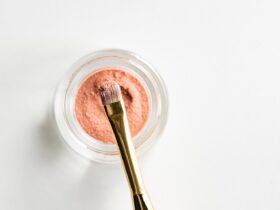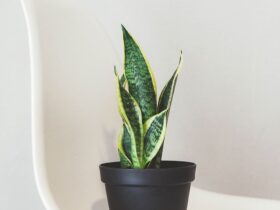Understanding Perfume Atomizer Clogs
Perfume atomizers, the ingenious little devices that transform liquid fragrance into a fine, alluring mist, can sometimes become frustratingly clogged. This malfunction not only renders your favorite scent inaccessible but also wastes precious product. Understanding the causes of these clogs is the first step towards prevention. Several factors contribute to the problem, primarily the nature of the perfume itself and environmental conditions.
Perfume Composition: Many perfumes contain a complex blend of oils, resins, and other aromatic compounds. Some of these ingredients, especially those of higher viscosity or those prone to oxidation, can solidify or thicken over time. This thickening creates a residue that accumulates within the narrow channels of the atomizer, eventually obstructing the flow.
Evaporation and Crystallization: Alcohol, a common solvent in perfumes, can evaporate, leaving behind a concentrated mixture of solids. This process is exacerbated by exposure to air and heat. The resulting crystallization within the atomizer can block the mechanism, preventing it from functioning correctly.
Dust and Debris: Microscopic particles of dust, lint, and other airborne debris can enter the atomizer, particularly if the cap is left off or the nozzle is exposed. These particles accumulate over time, forming a physical barrier that inhibits the spray function.
Infrequent Use: When a perfume atomizer is left unused for extended periods, the liquid within can stagnate and dry out. This drying process leaves behind a concentrated residue, similar to evaporation, which can clog the delicate internal components.
Preventative Measures: Keeping Your Atomizer Flowing
Fortunately, you can take several proactive steps to prevent clogging and maintain the optimal performance of your perfume atomizer:
- Proper Storage: Store your perfumes in a cool, dark, and dry place. This minimizes evaporation and oxidation, preventing the thickening and crystallization of perfume ingredients. Avoid direct sunlight, heat sources (radiators, ovens), and humid environments like bathrooms. A dedicated perfume storage area, such as a drawer or cabinet, is ideal.
- Upright Positioning: Always store your perfume bottle in an upright position. This helps prevent the perfume from coming into prolonged contact with the atomizer mechanism, reducing the likelihood of clogging.
- Regular Use: Use your perfumes regularly. Frequent use helps keep the liquid flowing and prevents the buildup of stagnant residue within the atomizer. If you have a large collection, rotate your perfumes to ensure each bottle is used periodically.
- Clean the Nozzle: After each use, gently wipe the nozzle of the atomizer with a clean, lint-free cloth. This removes any excess perfume that may have accumulated on the surface, preventing it from drying and solidifying.
- Purge with Alcohol: Periodically, especially if you notice a decrease in spray performance, purge the atomizer with isopropyl alcohol (rubbing alcohol). Fill a small dish with alcohol, remove the atomizer from the perfume bottle (if possible), and submerge the nozzle in the alcohol. Pump the atomizer several times to draw the alcohol through the mechanism. Repeat this process until the spray is clear. Allow the atomizer to air dry completely before reattaching it to the perfume bottle.
- Use a Funnel: When refilling a perfume bottle or decanting perfume into a travel atomizer, use a small funnel to prevent spills and contamination. This reduces the risk of dust and debris entering the atomizer mechanism.
- Consider a Decanting Syringe: For precise transfer of perfume, especially for vintage or rare fragrances, use a decanting syringe. These syringes allow you to extract perfume without exposing it to air or potentially contaminating it.
- Avoid Cross-Contamination: Do not use the same atomizer for different perfumes without thoroughly cleaning it first. Mixing different fragrances can lead to unexpected chemical reactions and the formation of sticky residues.
- Filter Perfumes (Especially Vintage): Vintage perfumes are more prone to clogging due to their age and the potential for sediment formation. Before using a vintage perfume, consider filtering it through a coffee filter or a laboratory filter to remove any particulate matter.
- Quality Atomizers: Invest in perfumes with high-quality atomizers. Cheaper atomizers are often made with lower-grade materials and are more susceptible to clogging and malfunctioning.
Unclogging a Clogged Atomizer: Remedial Steps
Despite your best efforts, your perfume atomizer may still become clogged. Here’s how to attempt to unclog it:
- Warm Water Soak: Remove the atomizer from the perfume bottle (if possible) and soak the nozzle in warm (not hot) water for several minutes. The warm water can help dissolve any solidified residue. After soaking, try pumping the atomizer to dislodge the clog.
- Isopropyl Alcohol Soak: If warm water doesn’t work, try soaking the nozzle in isopropyl alcohol. Alcohol is a stronger solvent and can be more effective at dissolving stubborn clogs.
- Compressed Air: Use a can of compressed air (the kind used for cleaning electronics) to blow out the clog. Direct the nozzle of the compressed air can towards the atomizer nozzle and give it short bursts of air.
- Fine Needle or Pin: As a last resort, you can try using a very fine needle or pin to gently dislodge the clog. Be extremely careful not to damage the delicate internal components of the atomizer.
- Ultrasonic Cleaner: For persistent clogs, consider using an ultrasonic cleaner. These devices use high-frequency sound waves to create cavitation bubbles that can dislodge dirt and debris.
Important Note: When attempting to unclog an atomizer, always proceed with caution. Excessive force or the use of sharp objects can damage the delicate components, rendering the atomizer unusable. If you are unable to unclog the atomizer after trying these methods, it may be necessary to replace it.
Conclusion
Preventing perfume atomizer clogs is a simple yet crucial aspect of perfume care. By understanding the causes of clogging and implementing the preventative measures outlined above, you can ensure that your favorite fragrances remain readily accessible and enjoyable. Regular maintenance, proper storage, and a proactive approach to cleaning will significantly extend the lifespan of your atomizers and prevent the frustration of dealing with a clogged spray mechanism. Taking these small steps will safeguard your investment in your perfume collection and allow you to fully appreciate the artistry and beauty of fragrance.
Frequently Asked Questions (FAQs)
















Leave a Reply